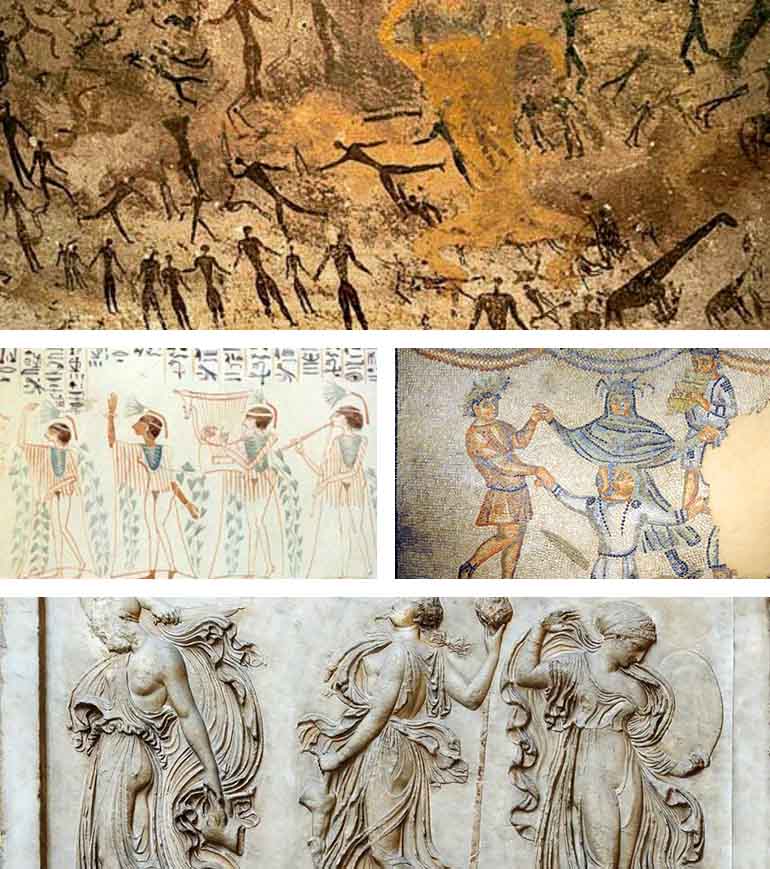Origins of Dance
All artistic expression has an origin. Here we will discuss the origin of dance.
The earliest dawn of the Dance among our fellow men that we can document dates back more than 10,000 years. Although the lack of writings in that prehistoric era brings us to certain gaps of knowledge, thanks to the pictorial manifestations found, for example, in the Caves of Altamira or the Grotto de le Gabillou, we have evidence of the existence of dances for ritual purposes.
With the passage of time we find a clear splendor of Dance in civilizations such as Egyptian, Greek and Roman. In these cases, as documentation, we already have elaborate artistic pieces such as bas-reliefs or mosaics and even texts that delve into the purpose of these Dances.
In ancient Egypt we can see how simple dances used to exalt the reincarnation of the god Osiris manage to evolve, driven by the pharaohs, to the point that they can only be performed by highly qualified dancers.
In Rome, the dance came to encompass celebrations, festivals and also Roman processions. Although in 150 BC the Roman nobility denignated the dance calling it suspicious and dangerous. This led to the closure of dance schools. Although thanks to Emperor Augustus the dance remained latent with the emergence of pantomime or mimicry, a dance in which communication is established through gestures and movements.

With the rise of the Christian Church in the Roman Empire and its influence during the Middle Ages, Dance once again faced rejection, being linked to lustfulness. This attitude persisted throughout the Middle Ages, although some pagan dances were adapted for church rituals.
Certain dances were used to celebrate seasonal changes, marking the end of winter and the arrival of spring.
In many European villages, dances continued in secret or were disguised to honor religious rites. Even the catastrophic effects of the Black Plague inspired, in secret, the creation of the Dance of Death—a dance whose movements symbolized the expulsion of disease from the body.
It was during the Renaissance that Dance reached its greatest splendor. Thanks to the patronage of renowned dance masters, princes in the Italian and French courts organized lavish performances featuring dancers and musiciansperforming complex, mythological pieces. This period gave rise to the art forms of ballet and opera.

Since its origins, dance has always made its way through all civilizations, becoming an integral part of them. Rituals to ensure a successful hunt or harvest, honor their gods, communicate through the body, rebel against the oppressor, or even challenge nature itself have been the main motivations for dance to evolve up to the present day, where its cultural status continues to grow, becoming a professional artistic alternative with qualified academies and training centers in cities worldwide, from classical dance schools in India to dance schools in Madrid.
Share this content


By Camila 11/10/2023 04:12:39
Hola pueden decirme el autor de este texto? Gracias!